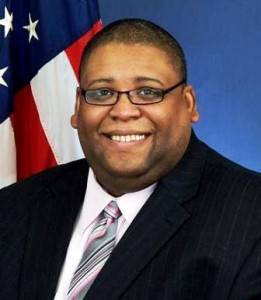Technologies allowing cars to “talk” to one another could cut the highway collision rate by as much as 80%, sharply reducing the number of injuries and fatalities, according to the nation’s top automotive safety regulator.
The National Highway Traffic Safety Administration is now working with auto manufacturers to test the viability of vehicle-to-vehicle communications systems and, if successful, could mandate the use of the technology, according to NHTSA Administrator David Strickland.
Such technology could alert one driver that another is about to run a red light or send a warning to all nearby vehicles that there’s an icy patch of pavement ahead.
“Our research shows that these technologies could help prevent a majority of the collisions that typically occur in the real world, such as rear-end collisions, intersection crashes, or collisions while switching lanes,” said Strickland during an appearance at the Society of Automotive Engineers’ annual SAE World Congress.
The U.S. Department of Transportation, which includes NHTSA, is about to begin a year-long test of so-called connected vehicle technology in Ann Arbor, Michigan. About 2,800 vehicles will participate in the program – which will also test the capabilities of vehicle-to-infrastructure technologies.
That would permit even greater levels of communication, potential advising motorists of traffic and weather problems, or automatically taking note of accidents and other issues.
During a session at the SAE World Congress, other speakers echoed Strickland’s optimism, suggesting there is a tremendous amount of promise.
While it could take several more years for regulators to determine the results of the Ann Arbor test and then write new rules, up to 25% of all vehicles on the road by 2020 could have connected vehicle systems onboard, according to Scott McCormick, president of the Connected Vehicle Trade Association.
For his part, Strickland emphasized that “We make sure we get things right” before enacting any new rules, however.
Connected vehicle technology is seen by some proponents as only a halfway measure leading towards an even more dramatic future in which motorists can buy fully autonomous vehicles. In fact, Google, which has been running extensive testing of autonomous technology, believes it is very close to commercialization.
“I don’t think we need to wait 10 years for the next model or body styles to come out to build this technology,” Anthony Levandowski, who heads the autonomous vehicle program for Google told the SAE.
Cars using its autonomous technology have already clocked over 200,000 miles, he said, without driver input.
Testing of fully autonomous vehicles has been ramping up steadily in recent years and most major automakers now have some development efforts underway. Nevada, meanwhile, recently became the first state to enact laws governing the operation of autonomous vehicles.
NHTSA Administrator Strickland, meanwhile, said his agency will step in and set its own rules once such technologies progress to the point they could move from concept to customer.

